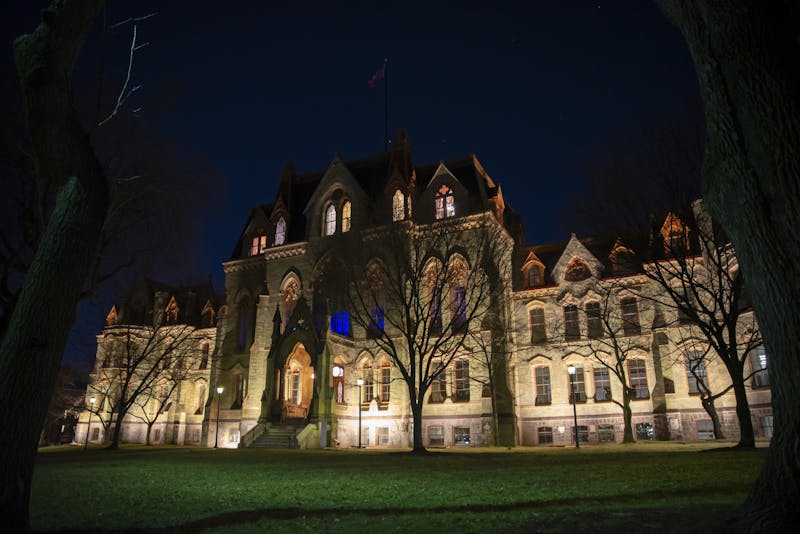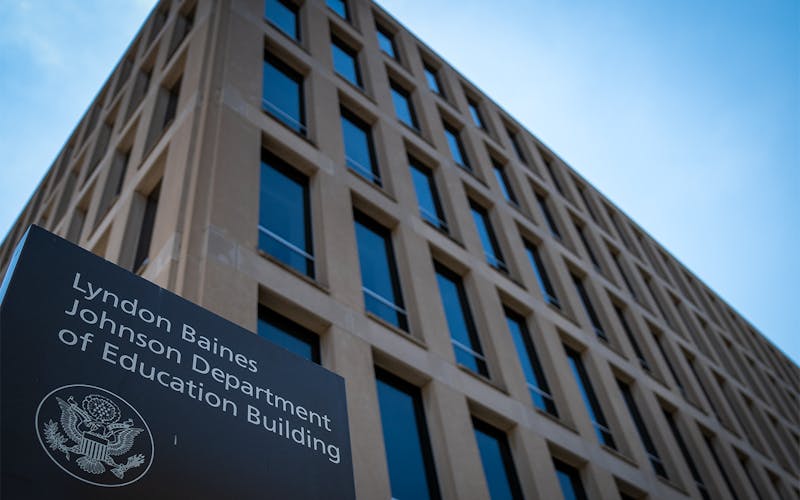
After months of negotiations and more than three decades of effort, the University has finally acquired the large tract of prime real estate currently owned by the United States Postal Service.
Penn will officially take ownership of the site in 2007, at a price of $50.6 million. At that time, the University will lease approximately 250,000 square feet of space back to the post office.
An area of 24 acres nestled roughly between Locust and Market streets near 30th Street Station, the property is currently home to a slew of parking lots, post office buildings and garages.
But that is all set to change over the next decade. Between 2007 and 2017, the area will see a flurry of development, including a vast array of recreational, retail, office and classroom spaces.
The eastward expansion, although stretching Penn's borders almost all of the way to the Schuylkill River, is necessary to compensate for future growth, school officials have said. All western expansion options have been exhausted. University President Judith Rodin pledged not to further encroach on neighborhoods to the west of campus.
"Given our commitment not to expand to the west and linking 40th Street as a place you do not pass, the only way we can be credible is by providing Penn an opportunity to grow in the direction of the east," said Omar Blaik, vice president of facilities and real estate.
"Nothing changes until spring 2007," Blaik said. The post office is "moving into [its] new facility in fall 2006 or spring 2007, [and] that's when they actually vacate the current properties we bought."
And, according to Blaik, that is when the first set of major changes to the property will begin to take shape.
"The first thing that we will do ... is take that 14 acres of asphalt and put green fields on, and tell our student body to go at it," Blaik said. "It will be a tremendous recreational opportunity."
The University's vision of devoting a significant portion of the postal lands to recreational uses is no accident.
"What we found is that greenery and recreation brings life to an area," Blaik said, describing the area that he sees as a haven for Frisbee enthusiasts and soccer players.
And now that the property has been officially acquired, those visions will become even sharper as the planning process continues to gain momentum.
Rodin, who has played an integral role in that process, said that although much of the planning work has already been done, a great deal still lies ahead.
"In the past year, we have spent a considerable amount of time ... to form a common vision that serves Penn, the surrounding institutions and the city at large," Rodin said in a University press release. "Now that the agreement is finalized, we will step up this planning effort to solidify future development plans for the site.
Blaik agreed, adding that the process will be a collaborative one.
"With the certainty of ownership, we will embark on a much more intensive planning exercise with the Schuylkill River Development Corp., [of] which we are a board member, and create a long-term plan," Blaik said.
According to Blaik, preliminary plans for the portion of the land north of Walnut Street call for the development of a mixed-use area, featuring retail, office and residential spaces.
"We want that to be a complementary use to that of the University, but more driven by the needs of the city at large," Blaik said.
Blaik added that the parcels south of Walnut Street will be reserved for the University's natural growth, including "classroom buildings, research [and] athletic facilities."
The Postal Service is looking forward to moving into new headquarters. David Fineman, the chairman of the Postal Service's Board of Governors, said that the sale will be of immense benefit to the organization.
"For over 25 years, this project has been the top project on the Postal Service's capital projects list," Fineman said.
He added that a new postal facility, to be located near the intersection of major transportation arteries in Southwest Philadelphia, is necessary.
"The Postal Service will have the state-of-the-art facility located in Southwest Philly, near both I-95 and I-76, as well as near the airport," Fineman said.
He also noted that the main postal facility's current site adjacent to 30th Street Station was located there because of antiquated mail transportation methods.
"In those days, the Postal Service transported the majority of our mail through the rail system," Fineman said.
The Postal Service has little need nowadays for the prime area near the station next to the river, and the city is looking forward to reclaiming the land for commercial and University use.
"The substantial investment by Penn in the existing main post office building and the 14 acres of undeveloped riverfront is just one indication of the positive impact we can have by focusing our efforts on the underutilized waterfront," Mayor John Street said.
That impact, according to several officials, will hopefully include a deepened connection between Center City and West Philadelphia.
"No longer will the river stand in the way of West Philadelphia and the University's campus," Fineman said. The project "should provide a linchpin to development from Center City to West Philadelphia."
The Daily Pennsylvanian is an independent, student-run newspaper. Please consider making a donation to support the coverage that shapes the University. Your generosity ensures a future of strong journalism at Penn.
DonatePlease note All comments are eligible for publication in The Daily Pennsylvanian.







